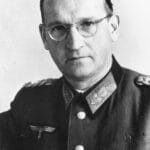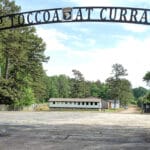Longstreet’s Petersburg: A Legacy Forged in War, Flavored with Peace
General James Longstreet, Robert E. Lee’s “Old War Horse,” looms large in the annals of Civil War history, particularly in Petersburg. His presence during the grueling ten-month Siege of Petersburg wasn’t merely incidental; it was pivotal. Today, his name graces a popular local eatery, Longstreet’s Deli. This article delves into the fascinating connection between a general who fought fiercely to defend this city and a modern-day establishment celebrated for its pizzas and sandwiches.
The Siege and the “War Horse”: Longstreet’s Pivotal Role
The Siege of Petersburg (1865), a brutal war of attrition, etched itself into the very landscape of the city. Longstreet, a trusted lieutenant of Robert E. Lee, played a crucial role. Some historians suggest that his defensive strategies—though still debated by scholars—were instrumental in prolonging the siege and impacting the war’s outcome. Longstreet’s arrival at Lee’s headquarters just as Union forces broke the Confederate line on April 2, 1865, underscores the dramatic tension of the time. John Davinier, a French painter, captured the spirit of such historical moments in his works, although not this particular event. For more context on invasions during this period, consider the story of Atilla the Hun’s invasion of Gaul in 451. His presence in Petersburg during these critical days undoubtedly shaped the city’s fate.
From Battlefield to Bistro: The Story of Longstreet’s Deli
Fast forward to the present, and you’ll find Longstreet’s Deli (302 North Sycamore St, Petersburg, VA 23803, (804) 722-4372), a lively hub offering pizza, specialty sandwiches, live music, and televised sports. Owner Frank Takacs describes the atmosphere as “high-quality casual,” a sentiment echoed in the 3.7-star rating on Yelp based on 210 reviews. While a definitive historical link between the deli and the general remains elusive, the name evokes Petersburg’s Civil War past, especially given its proximity to key historical sites. It’s likely the owners chose the name to honor a prominent figure from the city’s history, connecting their establishment to Petersburg’s rich heritage. Further research into the deli’s origins and the owners’ intentions could reveal a more concrete connection.
Longstreet’s Dual Legacies: Military Strategist and Petersburg Icon
Longstreet’s Deli represents more than just a place to eat; it embodies Petersburg’s evolution. It’s a symbol of the city’s revitalization, its resilience, and a nod to figures like Longstreet who shaped its destiny. The deli’s presence within Petersburg’s burgeoning culinary scene signifies the city’s forward momentum while embracing its past. This blend of old and new creates a unique dining experience, where the echoes of history mingle with the flavors of today.
“Pete” the Steadfast: Unraveling Longstreet’s Nickname
General James Longstreet’s nickname, “Pete,” originated not on the battlefield, but in his childhood. The story goes that his father bestowed the moniker upon him due to his stubborn nature, perhaps a shortened version of “Peter,” sometimes associated with steadfastness. This “rocklike” personality likely served him well during the war, translating into courage and determination. Robert E. Lee, too, used the nickname “Old Pete” and often referred to Longstreet as “My Old War Horse,” reflecting both familiarity and deep respect.
Gettysburg’s Shadow: A Legacy Clouded by Controversy
Longstreet’s disagreements with Lee over tactics at Gettysburg, particularly his concerns about Pickett’s Charge, became a point of contention. The post-war “Lost Cause” narrative often portrayed him as a scapegoat for the Confederate defeat. Whether his reluctance was justified is still debated among historians. Some argue his cautious approach might have been more prudent, potentially saving countless lives. Current research continues to explore these complexities, suggesting our understanding of Longstreet’s role at Gettysburg may still evolve.
The Longstreet Children: A Private Tragedy Amidst War
Amidst the Civil War’s turmoil, James and Maria Louisa Garland Longstreet faced a devastating personal loss. During the winter of 1862, scarlet fever claimed the lives of three of their children: Garland (approximately 4), James Jr. (approximately 3), and infant Louise. Their exact burial site near Richmond remains uncertain, a poignant reminder of the war’s lingering impact. This tragedy likely had a profound effect on Longstreet, adding another layer to the complexities of his life and legacy.
Longstreet and Lee at Gettysburg: A Clash of Strategies
Longstreet and Lee’s disagreement at Gettysburg wasn’t merely a difference of opinion; it was a fundamental clash of military strategies. Longstreet, a proponent of defensive warfare, believed the Confederates should fortify their positions and force the Union army to attack. Lee, known for his aggressive tactics, favored a bold offensive. Historians still debate the intensity of Longstreet’s objections, but his skepticism towards Lee’s plan is evident. Pickett’s Charge, the disastrous assault across an open field, tragically demonstrated the consequences of Lee’s strategy. While some argue Longstreet’s reluctance contributed to the Confederate defeat, others maintain his defensive approach may have been more prudent. The debate underscores the complexities of Gettysburg and the enduring questions surrounding Longstreet’s role. This clash of perspectives continues to fascinate historians, demonstrating how interpretations of the past can shift with new research and evolving perspectives.
- Unlock what part of speech is is: Master English Grammar Now - April 2, 2025
- Unlock the best US history books: A curated list for insightful reading - April 2, 2025
- First Lady Book: A History of Power and Influence - April 2, 2025
















